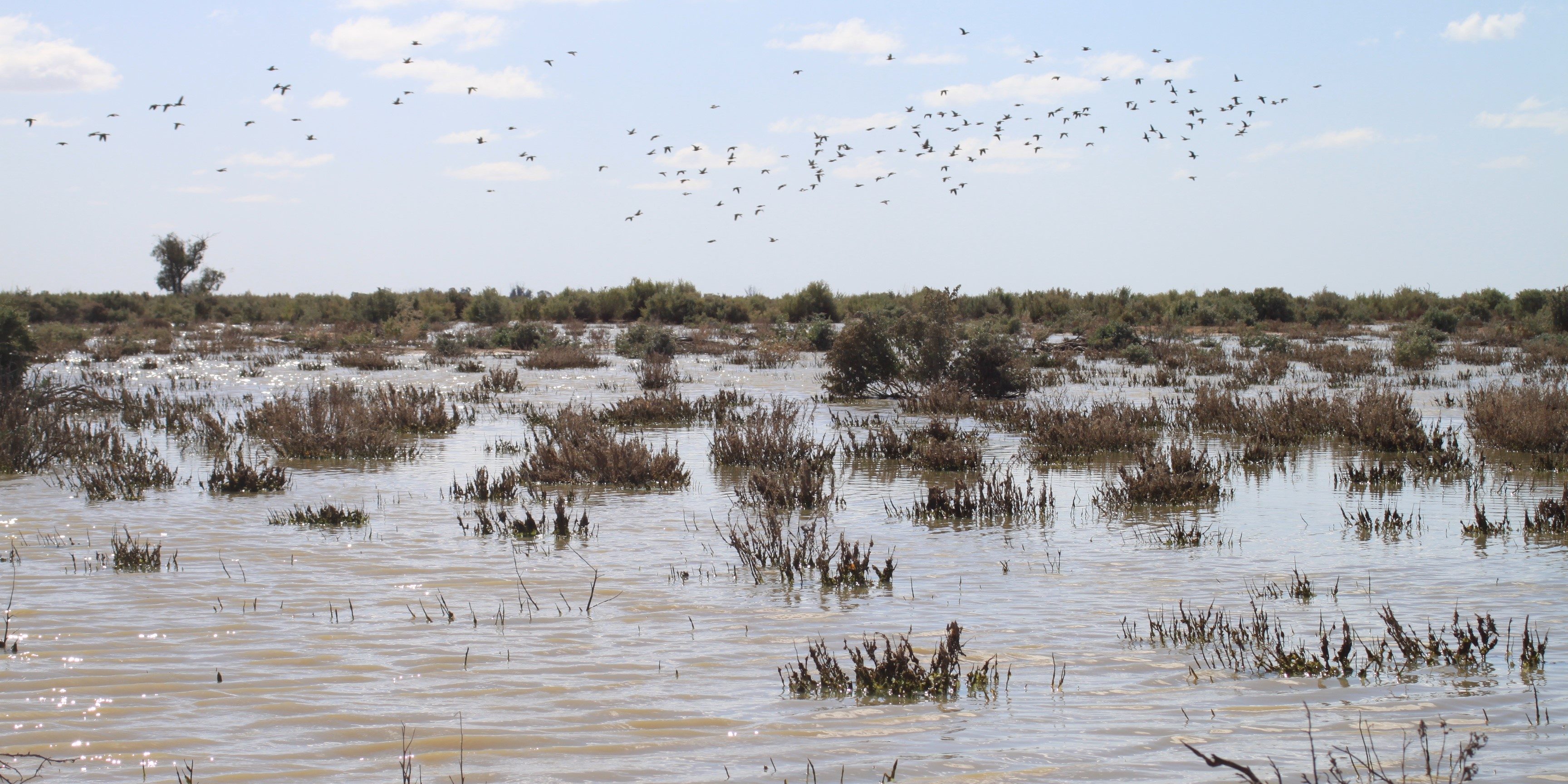2012 – 2014
Funded by the Australian Government’s Caring for Our Country program
Murrumbidgee Landcare obtained $90,000 of funding for this project, to trial habitat mitigation options for the Wah Wah pipeline.
In the Wah Wah region north of Hay, major changes to how stock and domestic water were delivered took place, with open channels and ground tanks are being replaced with covered pipelines and troughs. The change was made in an attempt to reduce evaporation losses from the open channels.
The Water for Wildlife project was developed in response to widespread concern regarding the impacts of this change on waterbirds, turtles, kangaroos, bats and frogs, who would no longer be able to access the water resources.
Matt Herring, the ecologist who coordinated the trials, said the project served as a fresh reminder of our enormous influence on wildlife across the landscape: “It strikes to the core of key questions about which species we want to provide habitat for, and how we want to distribute water for wildlife throughout landscapes”.
Through the project, work was undertaken to maintain some of the most significant tanks and enhance their habitat, as well as construct new wetland areas. Central to productive wetland habitats are water plants and shallows. Stock exclusion and earthworks can make a huge difference.
Said Matt, “For some species, such as the Galah and Crested Pigeon, the troughs will probably suffice as an alternative water source, but for many other species they won’t. There are also nationally threatened species in the Riverina, like the Australasian Bittern, that are not known to use Wah Wah tanks but could benefit greatly from targeted habitat creation”.
Wetland Management Guides
Through a $9,000 grant from the Norman Wettenhall Foundation, five management guides were developed for some of the most important Wah Wah wetlands.
These guides were developed by landholders, in conjunction with Wildlife Ecologist Matt Herring, as a key first step in facilitating positive future actions. They highlight the significance of each site and incorporate a range of ideas to benefit wildlife and native vegetation, from the removal of impediments to flow and delivery of environmental water, to fencing for grazing management and weed control programs.







